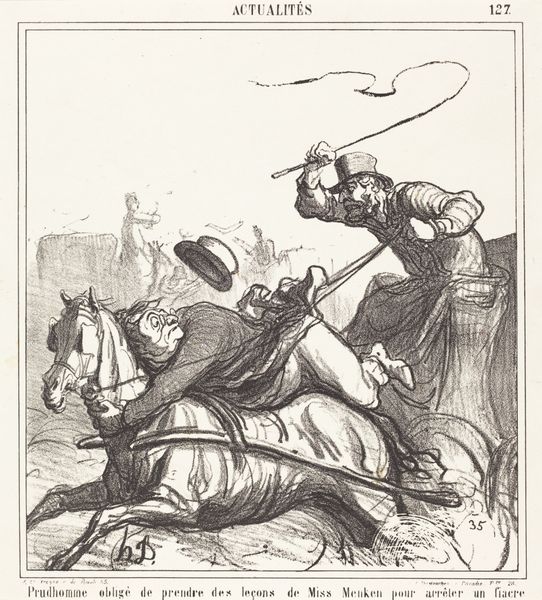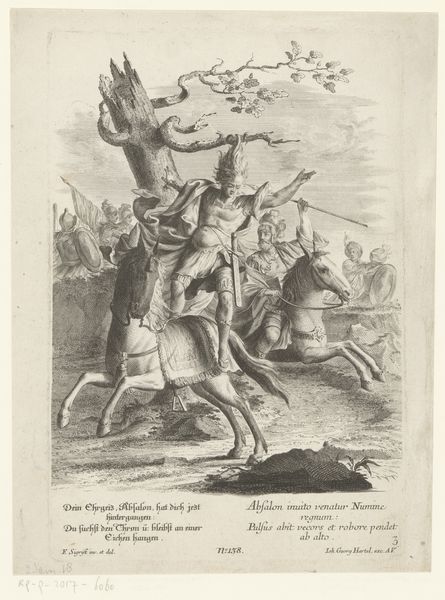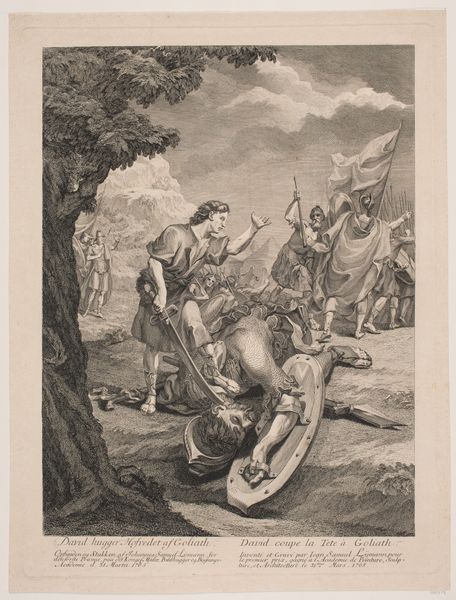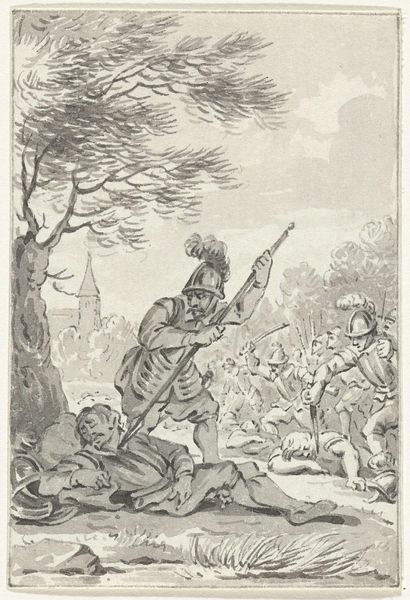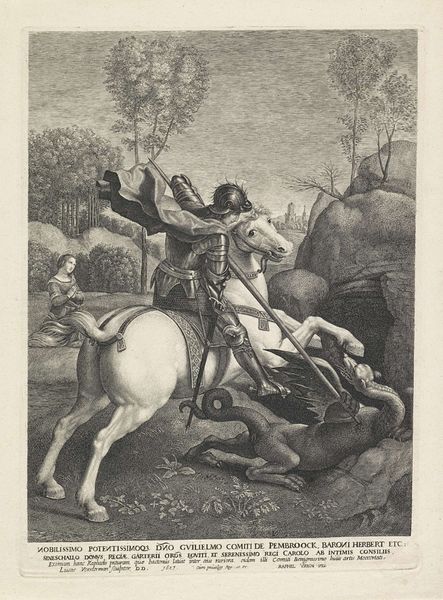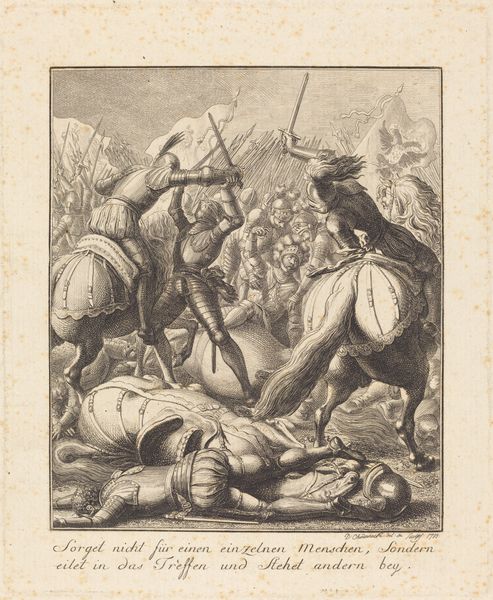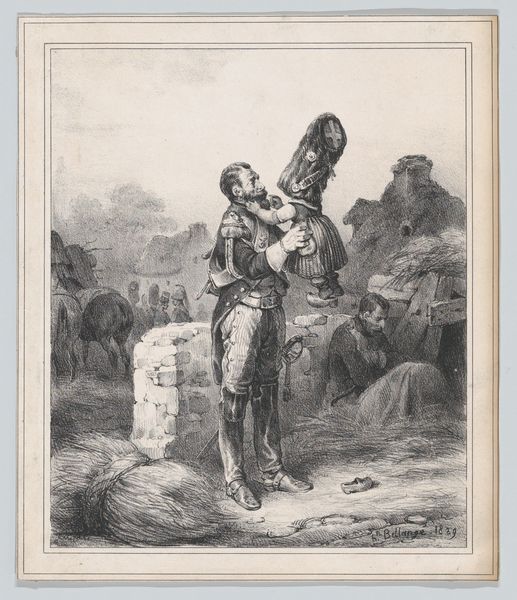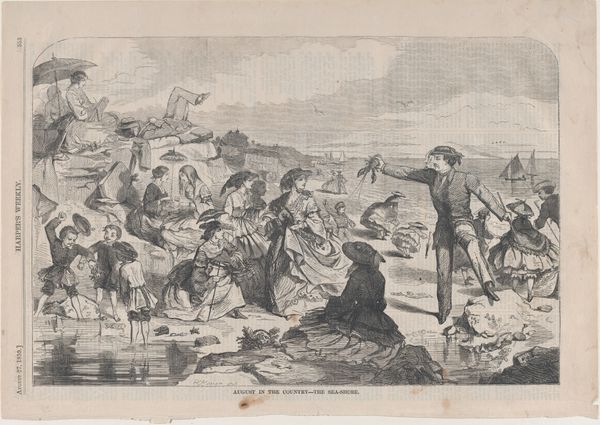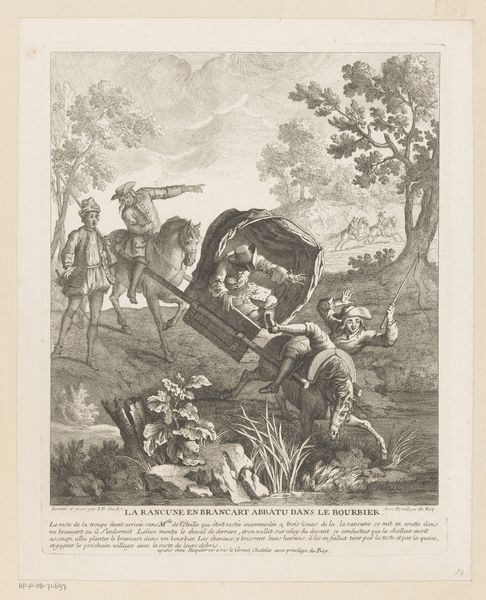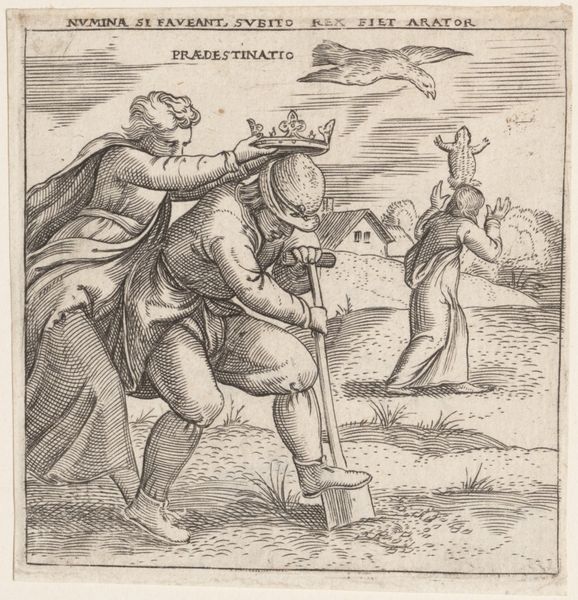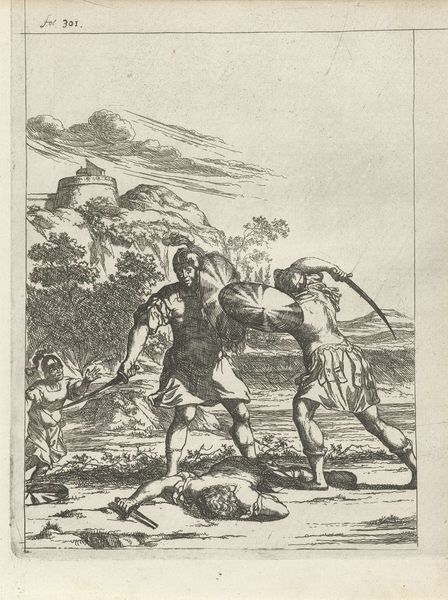
print, woodcut
#
medieval
#
narrative-art
# print
#
figuration
#
woodcut
#
line
#
history-painting
Dimensions: 187 mm (height) x 114 mm (width) (bladmaal)
Editor: So, this is Johan Aagaard's 1852 woodcut, "Arngrims Sønner," depicting a scene of conflict. It definitely feels dramatic and a bit…stark. What's your interpretation? Curator: "Arngrims Sønner" invites us to consider how narratives of masculinity and violence are constructed and perpetuated. Notice the composition: the centralized conflict, the bodies in dynamic poses… Aagaard presents a heroic saga, but through a 19th-century lens, which idealizes and perhaps romanticizes such violence. How do we grapple with this representation today, given our evolved understanding of conflict, gender, and power? Editor: That’s a great point. I hadn’t thought about the romanticizing aspect. Does the choice of a woodcut—the stark black and white—contribute to that at all, maybe making it feel more…mythic? Curator: Absolutely. The medium itself evokes a sense of historical authenticity and ties into printmaking’s role in disseminating nationalist narratives during the 19th century. This image likely circulated widely, shaping perceptions of Danish identity through the lens of ancient Norse sagas. Consider the artist’s role in potentially shaping a national consciousness around a particular form of masculine heroism, and who might be excluded or harmed by that very conscious raising? Editor: That’s fascinating. It really connects the historical artwork to current discussions about identity. I guess it makes me think more about how art reflects—and can actively shape—social attitudes. Curator: Precisely. These historical depictions were and are never neutral. They carried social and political meaning, often reinforcing power structures. Thinking about the image with modern intersectional approaches pushes us to examine the narratives of nationhood, the construction of masculine heroism and potential societal impacts and harms of that reinforcement. Editor: This definitely changes how I look at what seems, at first glance, to be just a scene from a saga. It adds layers of context and implication I wouldn't have considered. Curator: That's the power of art history; it helps us see the world, past and present, in new and more challenging ways.
Comments
No comments
Be the first to comment and join the conversation on the ultimate creative platform.
